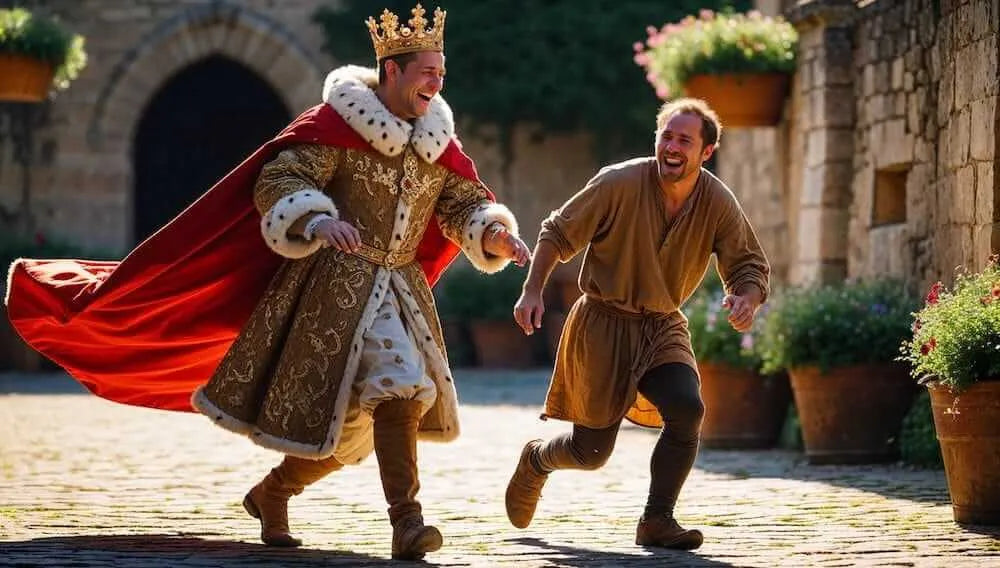
What Class Are You? Choosing a Costume Based on Medieval Social Status
Renaissance fairs are more than just a weekend of turkey legs and jousting tournaments — they’re a chance to time-travel. And what better way to step into another era than by dressing the part? But here's a fun twist: your costume can say more than just "I'm here to have fun." It can also reflect your chosen social status from the medieval world. From peasants to royalty, every class had its own style, function, and flair.
So, what class are you? Let’s dive into the main social categories of the Renaissance period and explore how to dress the part. Whether you're a noble lord or a mischievous rogue, this guide will help you find a costume that feels authentically you.
1. The Peasant Class – Down-to-Earth and Ready for Work
If you enjoy the simple things in life, like tending to the land, sharing a drink at the local tavern, or dancing around a Maypole, peasant attire might be your jam. These costumes are comfy, earthy, and full of charm.
Key Costume Elements:
-
Linen or rough cotton shirts
-
Simple skirts or breeches
-
Earth-toned tunics or aprons
-
Leather belts and pouches
-
Straw hats or basic wool caps
Great For:
-
Festival-goers who want mobility and comfort
-
Group costume themes (villages, traveling bands)
-
Interacting with kids or playing games on fairgrounds
Vibe: Relatable, warm, and perfect for a "salt of the earth" personality
2. The Merchant Class – Stylish and Resourceful
Merchants were the go-getters of the Renaissance world. They were educated, well-traveled, and dressed to impress without flaunting excessive wealth. If you love a good haggling session or want to walk the line between noble and commoner, this look might be for you.
Key Costume Elements:
-
Fine but modest fabrics (wool, dyed cotton)
-
Doublets or jerkins with some embroidery
-
Tunics with a structured fit
-
Decorative belts and leather shoes
-
Small satchels or scroll props
Great For:
-
Playing an apothecary, bookseller, or cloth trader
-
Costume contests with a refined touch
-
People who want layers without the weight of nobility
Vibe: Practical, clever, with a touch of ambition
3. The Artisan or Guild Member – Proud and Skilled
Blacksmiths, tailors, masons, and musicians all belonged to artisan guilds, and their outfits were often functional but decorated with hints of their trade. If you like roleplaying a character with a craft, this is your niche.
Key Costume Elements:
-
Aprons, tool belts, and work boots
-
Clothing stained or aged to look worn
-
Leather bracers, gloves, or work gear
-
Insignia or patches representing your guild
-
Musical instruments or fake tools as props
Great For:
-
Creating an immersive fair experience
-
Interactive roles (like demos or blacksmith acts)
-
Standing out with unique accessories
Vibe: Creative, hardworking, and proud of your role in society
4. The Clergy – Holy, Mysterious, and Revered
Monks, priests, and nuns played powerful roles in medieval life, often bridging the gap between the spiritual and the political. If you're drawn to quiet authority or enjoy a little mystery, consider going clerical.
Key Costume Elements:
-
Long robes in black, brown, or deep red
-
Rope belts or sashes
-
Hoods, veils, or coifs
-
Rosaries, prayer books, or crucifix accessories
Great For:
-
Staying cool in the shade while maintaining gravitas
-
Roleplaying fortune-tellers, confessors, or prophets
-
Adding gravitas or humor with an ironic twist
Vibe: Wise, mystical, and slightly spooky
5. The Knight or Soldier – Loyal and Battle-Ready
Whether you're a noble protector or a mercenary-for-hire, the knight class brings swagger and steel. These costumes are great for dramatic entrances, group battles, or anyone who wants to wear armor and carry a sword.
Key Costume Elements:
-
Chainmail shirts or faux plate armor
-
Tabbards or surcoats with heraldic symbols
-
Leather gauntlets and boots
-
Swords, shields, or lances (foam or real, depending on rules)
-
Capes or banners for flair
Great For:
-
Parade involvement or arena combat demos
-
Kids who want pictures with a knight
-
Anyone who likes to feel powerful and honorable
Vibe: Brave, disciplined, and ready for action
6. The Nobility – Elegant, Wealthy, and Refined
For those who crave the spotlight, noble attire is the way to go. This is where velvet, brocade, lace, and precious stones shine. These costumes are all about elegance and commanding presence.
Key Costume Elements:
-
Sumptuous gowns, doublets, or robes
-
Structured bodices and farthingales for women
-
Embroidered or beaded fabrics
-
Jeweled accessories and ornate headwear
-
Gloves, fans, or walking sticks
Great For:
-
Formal fair events or themed dinners
-
Couples or families dressing as a royal court
-
Photo ops and costume competitions
Vibe: Regal, commanding, and maybe a little extra
7. The Rogue or Outlaw – Free-Spirited and Rebellious
Robin Hood types, highwaymen, or pirates fit this mold. If you enjoy mischief, charm, or dancing on the edge of the rules, this look is for you.
Key Costume Elements:
-
Layered tunics and cloaks
-
Earth-tones with a pop of red or green
-
Daggers, lockpicks, or coin purses
-
Hoods or wide-brimmed hats
-
Boots meant for sneaking or running
Great For:
-
Roleplaying with other fairgoers
-
Creating a mysterious or flirty persona
-
Adding storytelling to your day
Vibe: Daring, clever, and impossible to pin down
Final Thoughts: Choose Your Path
Choosing a costume based on medieval social class adds a layer of depth and storytelling to your Renaissance fair experience. It helps you connect with the spirit of the era and gives you a framework for your character’s background, behavior, and even speech.
So whether you’re a lowly baker with flour-dusted hands or a silk-clad countess sipping mulled wine, wear your class with pride. After all, Renaissance fairs are about play, performance, and stepping into a different life — if only for a day.
Need help putting your look together? Browse our shop for ready-to-wear pieces and accessories for every class. No matter where you fall in the medieval hierarchy, we’ve got something to elevate your fair experience.


